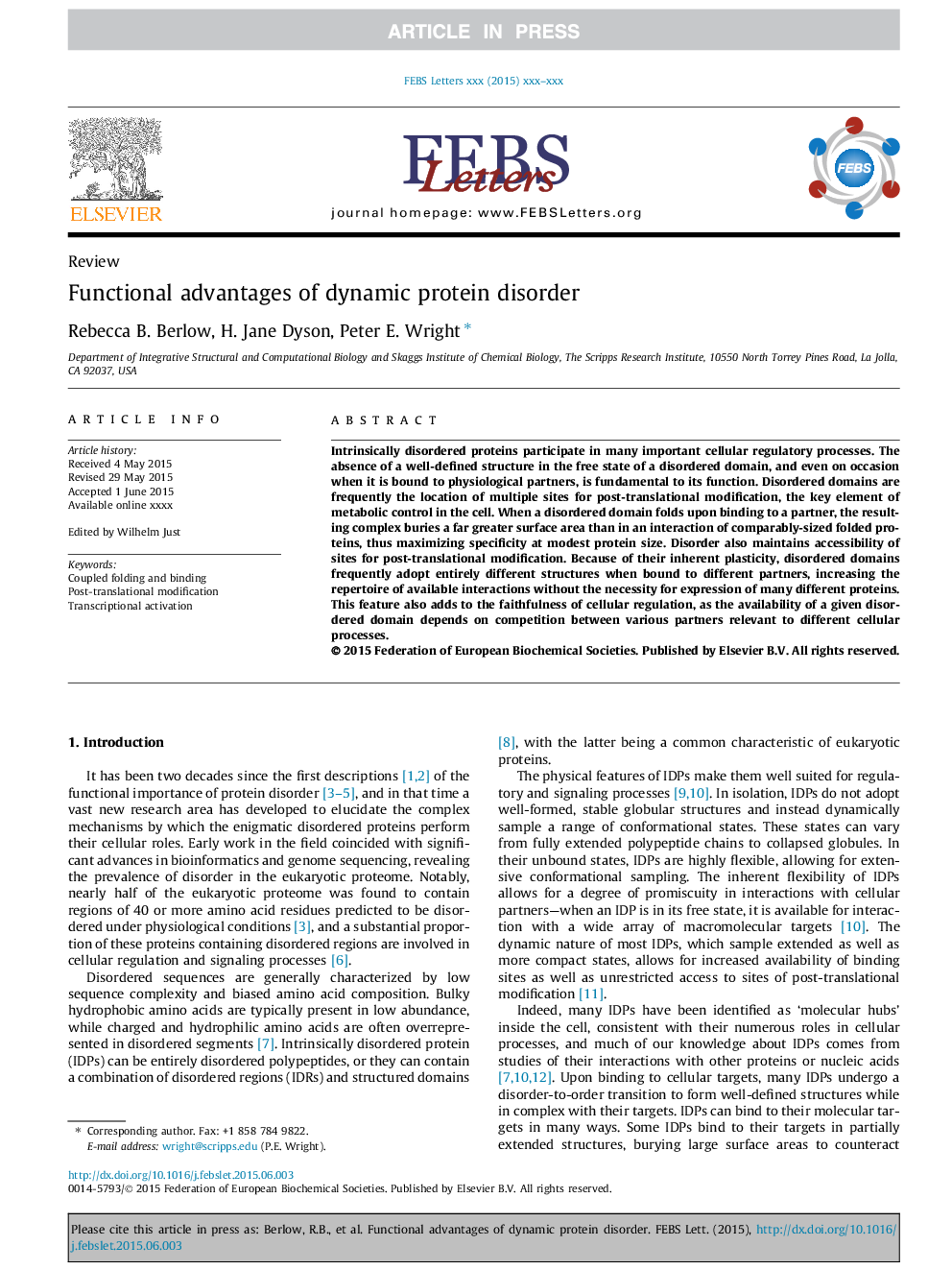| Article ID | Journal | Published Year | Pages | File Type |
|---|---|---|---|---|
| 10869935 | FEBS Letters | 2015 | 8 Pages |
Abstract
Intrinsically disordered proteins participate in many important cellular regulatory processes. The absence of a well-defined structure in the free state of a disordered domain, and even on occasion when it is bound to physiological partners, is fundamental to its function. Disordered domains are frequently the location of multiple sites for post-translational modification, the key element of metabolic control in the cell. When a disordered domain folds upon binding to a partner, the resulting complex buries a far greater surface area than in an interaction of comparably-sized folded proteins, thus maximizing specificity at modest protein size. Disorder also maintains accessibility of sites for post-translational modification. Because of their inherent plasticity, disordered domains frequently adopt entirely different structures when bound to different partners, increasing the repertoire of available interactions without the necessity for expression of many different proteins. This feature also adds to the faithfulness of cellular regulation, as the availability of a given disordered domain depends on competition between various partners relevant to different cellular processes.
Related Topics
Life Sciences
Agricultural and Biological Sciences
Plant Science
Authors
Rebecca B. Berlow, H. Jane Dyson, Peter E. Wright,
